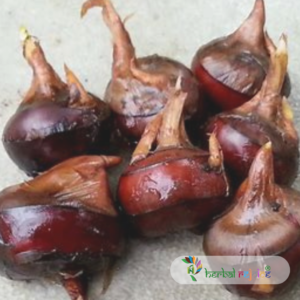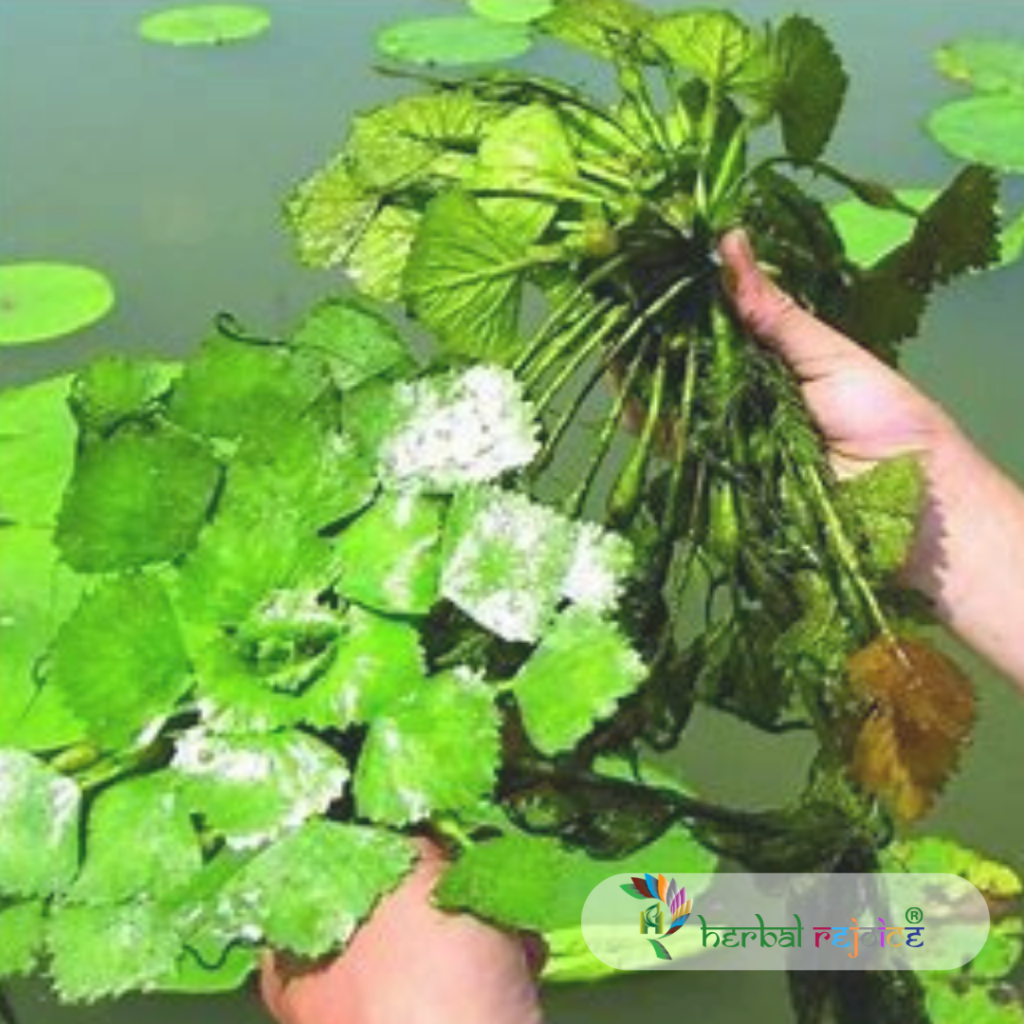Introduction
Water Chestnut, also known by its scientific name Trapa bispinosa Roxb., belongs to the Trapaceae family. It is found throughout India and is commonly known as “Shrngaataka” in Ayurveda, “Singhaaraa” in Unani, and “Singara” in Siddha. It contains nutrients like phosphorus, sulfur, calcium, magnesium, sodium, potassium, iron, and manganese.
Medicinal Properties of Water Chestnut
Water Chestnut has been extensively used in Ayurveda for its medicinal properties. The Ayurvedic Pharmacopoeia of India recommends the use of dried Water Chestnut kernels in various conditions such as bleeding disorders, threatened abortion, dysuria, polyuria, and edema.
The dried kernels are also used to prepare flour, which is commonly used in India for breaking fast. The flour is known to be rich in proteins and minerals.
Nutritional content of Water Chestnut
The nutritional profile of this flour is impressive. The flour derived from the dried kernels of both red and white varieties contains significant amounts of phosphorus, sulfur, calcium, magnesium, sodium, potassium, iron, and manganese.
Phosphorus is present in amounts of 45 mg/100 g in red variety and 48 mg/100 g in white variety. Sulfur content is 122.81 mg/100 g in red variety and 130.16 mg/100 g in white variety.

Chemical Constituents
Calcium content is 60 mg/100 g in red variety and 20 mg/100 g in white variety. Magnesium content is 200 mg/100 g in red variety and 160 mg/100 g in white variety. Sodium content is 100 mg/100 g in red variety and 80 mg/100 g in white variety.
Potassium content is 1800 mg/100 g in red variety and 1760 mg/100 g in white variety. Iron content is 145.16 ppm in red variety and 129.02 ppm in white variety. Manganese content is 18.93 ppm in red variety and 11.36 ppm in white variety.
Other Components
Additionally, the starch isolated from Water Chestnut flour consists of 15% amylose and 85% amylopectin. This composition makes it a valuable ingredient in various food preparations.
Dosage
In terms of dosage, dried Water Chestnut seeds can be consumed in the form of a powder. The recommended dosage is 5-10 grams of the powder.
Traditional Uses of Water Chestnut
Water Chestnut (Trapa bispinosa Roxb.) has gained popularity due to its numerous health benefits. Its traditional use in Ayurveda and other traditional medicinal systems highlights its therapeutic potential. The presence of various minerals and proteins in the flour derived from the dried kernels makes it a nutritious addition to meals. Moreover, its versatility in various culinary preparations adds to its appeal.
Conclusion
In conclusion, Water Chestnut (Trapa bispinosa Roxb.) is a valuable plant with many potential health benefits. Its traditional use in Ayurveda and other traditional medicinal systems, as well as its nutritional profile, make it a popular choice among individuals looking to enhance their overall well-being. Incorporating Water Chestnut into one’s diet can be a delicious way to improve health.
Frequently Asked Questions
What is Water Chestnut?
Water Chestnut, scientifically known as Trapa bispinosa Roxb., is a plant that belongs to the Trapaceae family. It is commonly found throughout India and has various traditional names such as “Shrngaataka” in Ayurveda, “Singhaaraa” in Unani, and “Singara” in Siddha.
How is Water Chestnut used in Ayurveda?
It has been used in Ayurveda for its medicinal properties. The dried kernels are recommended for conditions such as bleeding disorders, threatened abortion, dysuria, polyuria, and edema.
What is the nutritional value of Water Chestnut flour?
It is rich in proteins and minerals. It contains phosphorus, sulfur, calcium, magnesium, sodium, potassium, iron, and manganese. The exact amounts vary between the red and white varieties.
What is the phosphorus content in red variety Water Chestnut flour?
The red variety of the flour contains approximately 45 mg of phosphorus per 100 grams.
What is the sulfur content in white variety Water Chestnut flour?
The white variety of flour contains approximately 130.16 mg of sulfur per 100 grams.
How is Water Chestnut flour beneficial in food preparations?
The starch isolated from flour consists of 15% amylose and 85% amylopectin. This composition makes it a valuable ingredient in various food preparations.
How can dried Water Chestnut seeds be consumed?
Dried seeds can be consumed in the form of a powder.
What is the recommended dosage of Water Chestnut powder?
The recommended dosage of Water Chestnut powder is 5-10 grams.
What are the traditional uses of Water Chestnut in Ayurveda?
In Ayurveda, Water Chestnut is traditionally used for conditions such as bleeding disorders, threatened abortion, dysuria, polyuria, and edema.
What minerals are present in Water Chestnut flour?
Water Chestnut flour contains minerals such as phosphorus, sulfur, calcium, magnesium, sodium, potassium, iron, and manganese.
What is the calcium content in red variety Water Chestnut flour?
The red variety of flour contains approximately 60 mg of calcium per 100 grams.
What is the magnesium content in white variety Water Chestnut flour?
The white variety of flour contains approximately 160 mg of magnesium per 100 grams.
How can Water Chestnut be incorporated into meals?
Water Chestnut can be incorporated into meals in various culinary preparations.
What are the traditional names of Water Chestnut?
It is known as “Shrngaataka” in Ayurveda, “Singhaaraa” in Unani, and “Singara” in Siddha.
What are the health benefits of Water Chestnut?
It has numerous health benefits, which is why it has gained popularity. Its traditional use in Ayurveda and other traditional medicinal systems highlights its therapeutic potential.
What is the amylose content in Water Chestnut flour?
The starch isolated from flour consists of 15% amylose.
How can Water Chestnut contribute to overall well-being?
By incorporating Water Chestnut into one’s diet, individuals can enjoy its numerous health benefits and improve their overall well-being.
What makes Water Chestnut flour a nutritious addition to meals?
The flour contains various minerals and proteins, making it a nutritious addition to meals.
What is the iron content in red variety Water Chestnut flour?
The red variety of flour contains approximately 145.16 ppm of iron.
How can the versatility of Water Chestnut be enjoyed in culinary preparations?
Water Chestnut’s versatility can be enjoyed in various culinary preparations, making it a delicious and healthy choice.


